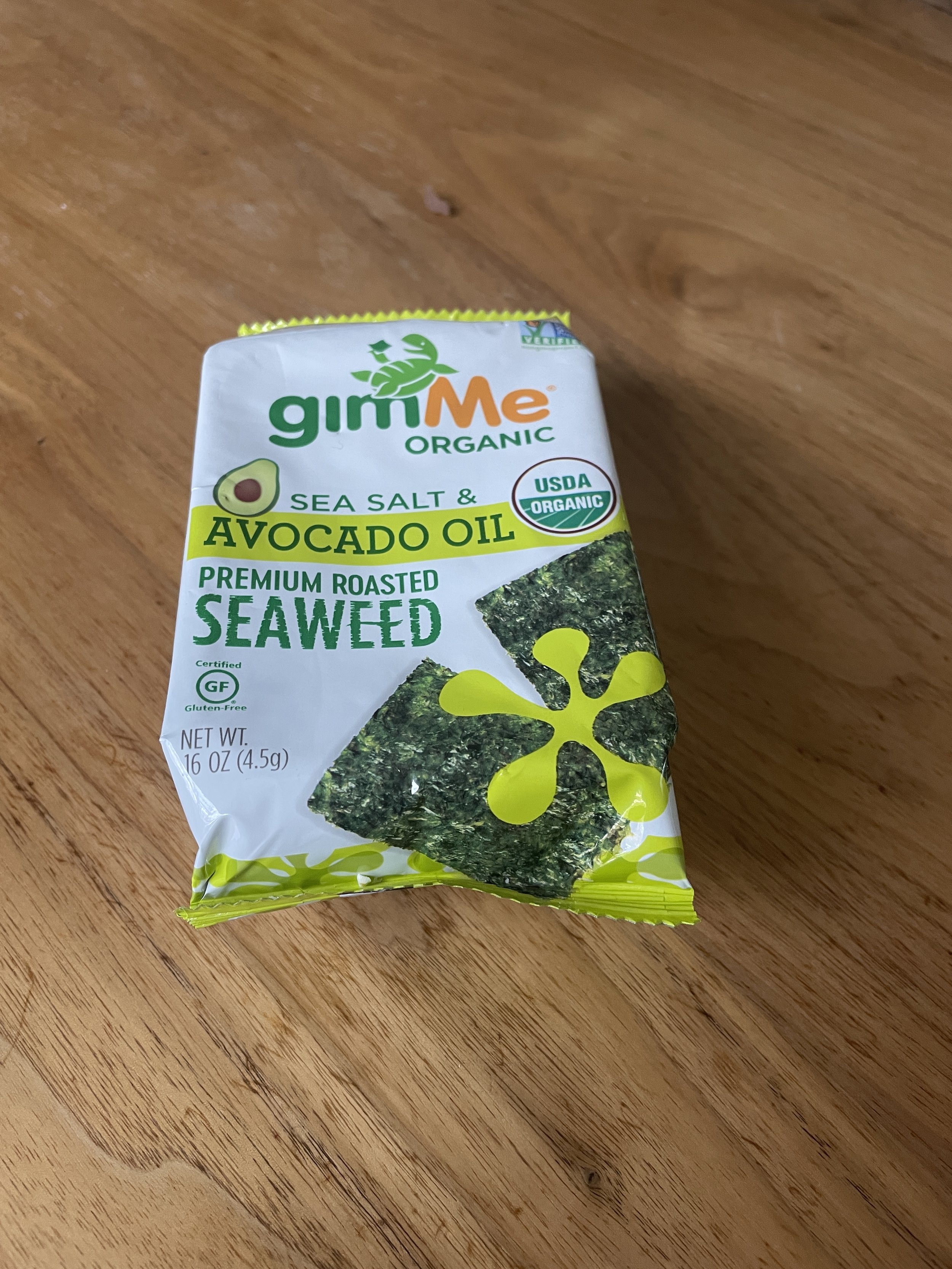Why Seaweed?
Nutrient rich sea vegetables offer a food source for receiving iodine, folate, calcium, potassium, and vitamins A, B1, B2, C, E and K. They contain prebiotic fiber which helps to feed the helpful bacteria in your gut. Sea vegetables help support thyroid and hormone function. Ways to incorporate sea vegetables into your diet:
Roasted seaweed snacks - these provide a savory, salty snack that is a great substitute for chips
Sushi - an easy lunch or dinner whether you get some from your grocery store, go out to a restaurant or make it at home
Sea Vegetable Seasoning - unique flavor and spice to eggs, rice bowls, salads
Cooking rice, quinoa, or oatmeal with kombu seaweed in the pot adds nutrients without any seaweed taste
Make your own Sushi
Ingredients:
I c Sushi Rice (I triple for a family of 5)
1 1/2 c water (I make in rice cooker using that water ratio)
1 Tbs sesame oil
1/3 c rice vinegar
1 /4 c coconut palm sugar or cane sugar
1 tsp sea salt
4 sheets nori seaweed
2 carrots sliced into thin strips
1 avocados sliced into thin strips
1 cucumber sliced into thin strips
sushi grade salmon, tuna, or shrimp(optional)
3 Tbs sesame seeds
Gluten free Tamari for serving (optional)
pickled ginger (optional)
wasabi (optional)
Directions:
1) Place uncooked rice in fine mesh strainer and rinse then transfer to medium pot.
2) Add water, coconut palm sugar or sugar, sesame oil, rice vinegar and sea salt.
3) Bring to a boil then reduce to lowest heat, cover and cook for 20 minutes or until translucent and sticky.
4) Lay one sheet of nori on top of sushi mat and press 1/2 cup rice into center.
5) Lay carrots, avocado, cucumber, fish.
6) Sprinkle with sesame seeds then roll tightly using mat. Remove mat and slice into 1-inch pieces.
7) Repeat with remaining nori sheets.
8) Serve with Tamari and wasabi if desired.



